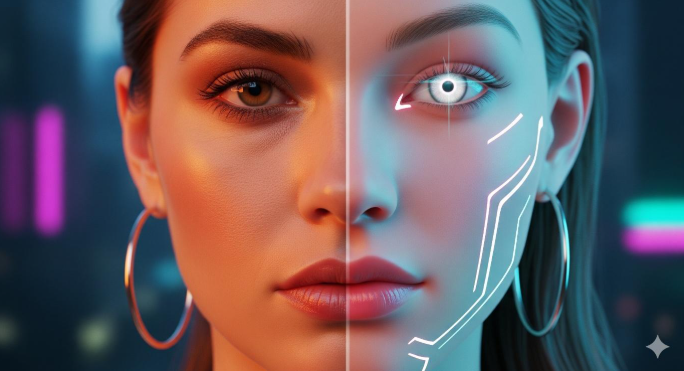AI vs Human Influencers: Who Will Dominate Marketing in 2025?
Influencer marketing is undergoing one of its most dramatic shifts in years. The rise of artificial intelligence (AI) has not only transformed content creation but has given birth to a new class of influencers—virtual personalities powered by algorithms. As brands experiment with these digital avatars, the question becomes clear: Will AI influencers replace their human counterparts, or will both find their place in the marketing ecosystem?
The Rise of AI Influencers
AI-generated influencers are digital characters—entirely fictional yet designed to look, sound, and behave like real people. Some are created using advanced CGI and generative AI tools, while others exist as social media personas managed by creative teams and powered by machine learning to adapt their tone and style based on audience response.
Why Brands Are Turning to AI-Generated Influencers
- Consistency and Control
AI personalities don’t miss deadlines, ask for higher fees, or face public controversies. Their messaging is tightly controlled, reducing the risk of brand misalignment or scandals. - Cost Efficiency Over Time
While initial development can be expensive, AI influencers can produce endless content without additional appearance fees, travel costs, or negotiation cycles. - Scalability
A single AI influencer can be “present” on multiple platforms, engage with audiences in multiple languages, and adapt content instantly for global campaigns. - Innovation Appeal
Working with AI influencers signals that a brand is forward-thinking and technologically savvy—an attractive proposition for younger, tech-engaged demographics.
The Case for Human Influencers
Despite the excitement around AI avatars, human influencers continue to dominate social media marketing—and for good reason.
The Power of Authentic Connection
Consumers often follow influencers because of their relatability, vulnerability, and personal experiences. Whether it’s a fitness coach sharing their daily routine or a traveller documenting their adventures, audiences connect with human stories—not perfectly curated algorithms.
Trust and Emotional Resonance
A human influencer can respond to events, express genuine emotions, and demonstrate real product experiences. This ability to form emotional connections is difficult—if not impossible—for an AI-generated persona to replicate convincingly.
Cultural Relevance and Context
Humans can navigate cultural trends, current events, and social nuances in ways that AI struggles to emulate without risk of tone-deaf mistakes.
Audience Perception: Who Do Consumers Trust More?
Trust remains the biggest hurdle for AI-generated influencers. While some audiences embrace the novelty, others view them as artificial and disingenuous. In an era where consumers value transparency and authenticity, brands risk backlash if campaigns feel deceptive.
However, younger generations—particularly Gen Z—are more open to AI-driven content. They’ve grown up interacting with virtual characters in video games, on YouTube, and in the metaverse. For them, the line between real and virtual is more blurred, and entertainment value can sometimes outweigh authenticity.
Blended Campaigns: The Future of Influencer Marketing?
Rather than replacing human influencers, AI personalities are likely to complement them—creating hybrid campaigns where both play distinct roles.
- AI Influencers for Evergreen, Scalable Content
AI avatars are ideal for brand tutorials, product showcases, or continuous posting at scale—especially across multiple regions or languages. - Human Influencers for Storytelling & Emotional Depth
Real people provide authentic narratives, testimonials, and deeper engagement—essential for building trust and loyalty.
This dual strategy allows brands to enjoy the efficiency and consistency of AI while preserving the human connection that audiences value most.
Risks & Ethical Considerations
Transparency & Disclosure
Brands must clearly disclose when they are using AI-generated influencers to avoid misleading consumers. Regulatory bodies may soon require explicit labelling in social posts, similar to paid promotion disclosures.
Data Privacy Concerns
Some AI influencers are trained using vast amounts of user data. Without proper governance, this can lead to privacy violations or misuse of personal information.
Avoiding the Uncanny Valley
When virtual influencers look almost—but not quite—human, they can evoke discomfort. Brands must balance realism with design aesthetics to maintain audience comfort.
Strategies for Brands in 2025
- Test Small Before Scaling
Start with limited AI-led campaigns—such as launching a virtual influencer for a niche product line or seasonal promotion—before committing significant resources. - Prioritise Storytelling
Whether human or AI, influencers need to tell a compelling brand story. Audiences engage with emotions, not just polished content. - Maintain Human Oversight
AI avatars should always be guided by human creatives to ensure messaging remains relatable, culturally sensitive, and brand-appropriate. - Blend, Don’t Replace
Consider AI influencers as an addition to your influencer mix—not a substitute. Combining digital personas with human voices ensures maximum reach and emotional connection.
Final Thoughts
The influencer marketing landscape in 2025 is defined by innovation and balance. AI influencers offer efficiency, scalability, and creative possibilities that were unimaginable a few years ago. Yet, the essence of influence—trust, connection, and authenticity—still belongs to human creators.
For brands, the future isn’t about choosing between AI or human influencers. It’s about combining the best of both worlds to create campaigns that are not only efficient and futuristic but also emotionally resonant and trustworthy.

